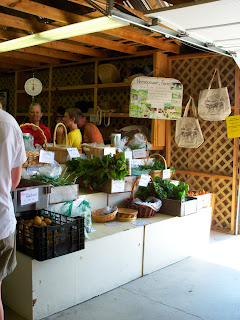We harvested nine beautiful beets for my Mom's Mom. She loves them.
I ran into a sizable spider near the lettuce patch.
I picked an entire basket full of green beans and dragon langerie beans to bring to our family.
The radishes were thinned to one inch apart and then watered and mulched to keep in the moisture. I ate the thinnings for my lunch, with quinoa and cucumbers (from the garden!) and parmesan cheese. Yum. Maybe when we get back there will be little tiny radishes to eat.
The tomatoes are not ready yet, but getting there....



















































